How to Choose the Best Turf for High Traffic Areas
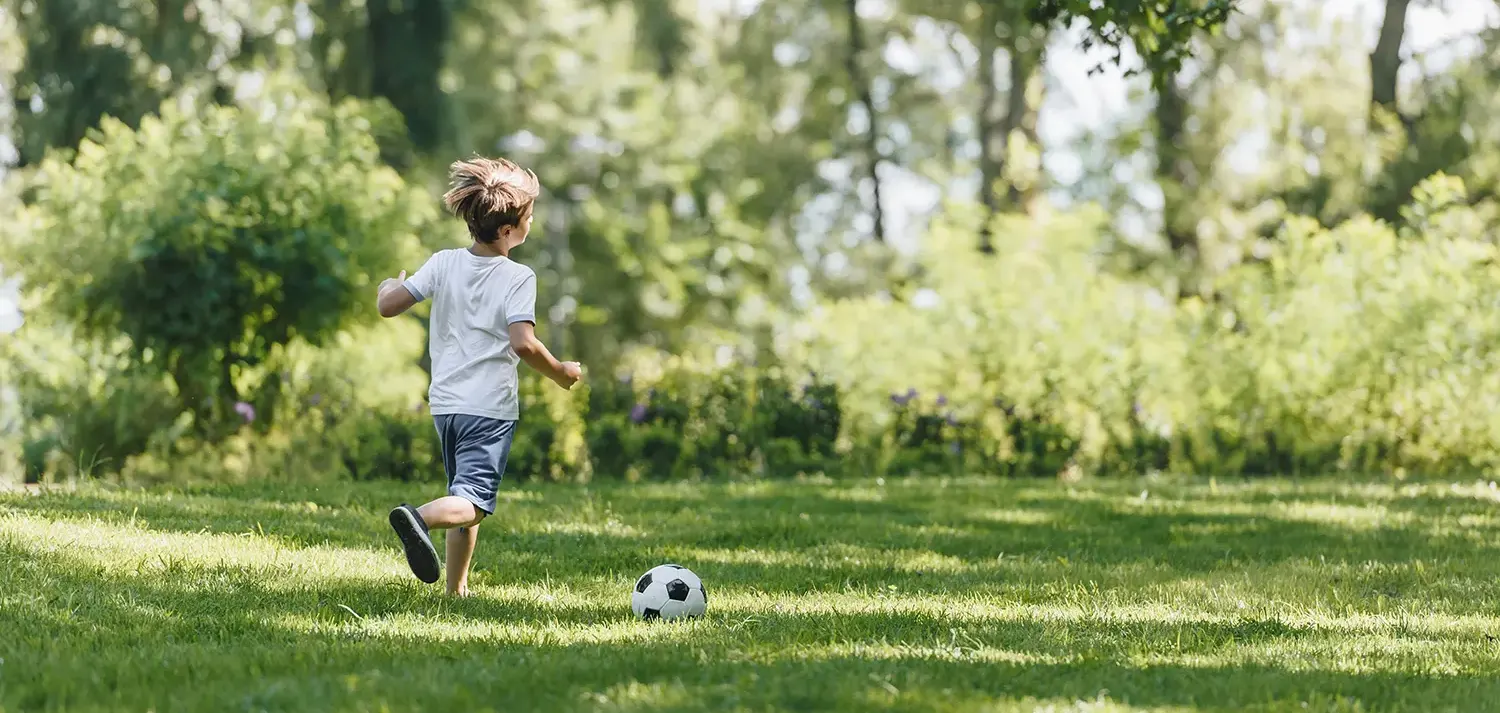
A vibrant, green lawn enhances both the appearance and value of any property, but maintaining that perfect lawn can be challenging if you have areas with heavy foot traffic.
Whether it’s a backyard that sees daily playtime, a sports field hosting regular games, or a commercial space with constant use, choosing the right type of grass for high-traffic areas is essential. In this blog, we’ll explore the best options for tough, durable turf, the factors to consider when making your choice, and essential tips for lawn maintenance to ensure a long-lasting, vibrant lawn.
Why Strong Grass is Crucial for High-Traffic Areas
Heavy foot traffic stresses the grass, leading to thinning, bare spots, and patchy areas. In these high-traffic environments, weak grass varieties simply can’t survive. That’s why choosing strong, resilient grass is critical.
These grasses are specifically bred to withstand daily use, recover quickly from damage, and maintain a uniform appearance even under harsh conditions. The right type of grass will have deep roots, quick recovery times, and a durable structure, allowing it to bounce back after being walked on repeatedly.
Top Grass Types for High-Traffic Areas
Different types of grass perform better in various climates, making it important to consider both warm-season and cool-season grasses depending on where you live. Here are some top options that provide strong, durable coverage for high-traffic areas:
Kentucky Bluegrass
Kentucky Bluegrass is a popular choice for high-traffic lawns due to its ability to self-repair. It’s often blended in grass seed mixes to add durability and wear tolerance. With deeper roots and a dense, thick appearance, Kentucky Bluegrass is ideal for areas with frequent use. However, it performs best in cool-season climates, so it may struggle in areas with extreme heat.
Perennial Ryegrass
If you’re looking for fast germination and quick visible results, Perennial Ryegrass is an excellent option. Known for its ability to establish quickly, it’s perfect for areas that need rapid recovery
from wear. Though it thrives in cool-season climates, it can also be mixed with other grasses to enhance its performance in warm-season regions. Ryegrass is often used in sports fields and play areas because it can withstand high foot traffic without showing signs of stress.
Bermuda Grass
Bermuda Grass is a great choice for warm-season climates, especially in regions prone to heat and drought. Its durability and tolerance for hot weather make it a favourite for high-traffic lawns. Bermuda Grass has strong roots that allow it to recover quickly after being trampled, making it ideal for playgrounds, sports fields, and sunny backyards. While it requires more sunlight than some other grasses, its strong, resilient structure makes it well-suited for tough conditions.
Zoysia Grass
Another excellent choice for warm-season areas, Zoysia Grass is known for its ability to form a dense, carpet-like turf. Its tight growth pattern helps it resist damage from foot traffic, and it can tolerate both heat and drought. Zoysia is slow-growing, which means less frequent mowing and fewer maintenance needs, but it also takes longer to establish. Once established, though, it’s one of the most durable and resilient grass types for high-traffic zones.
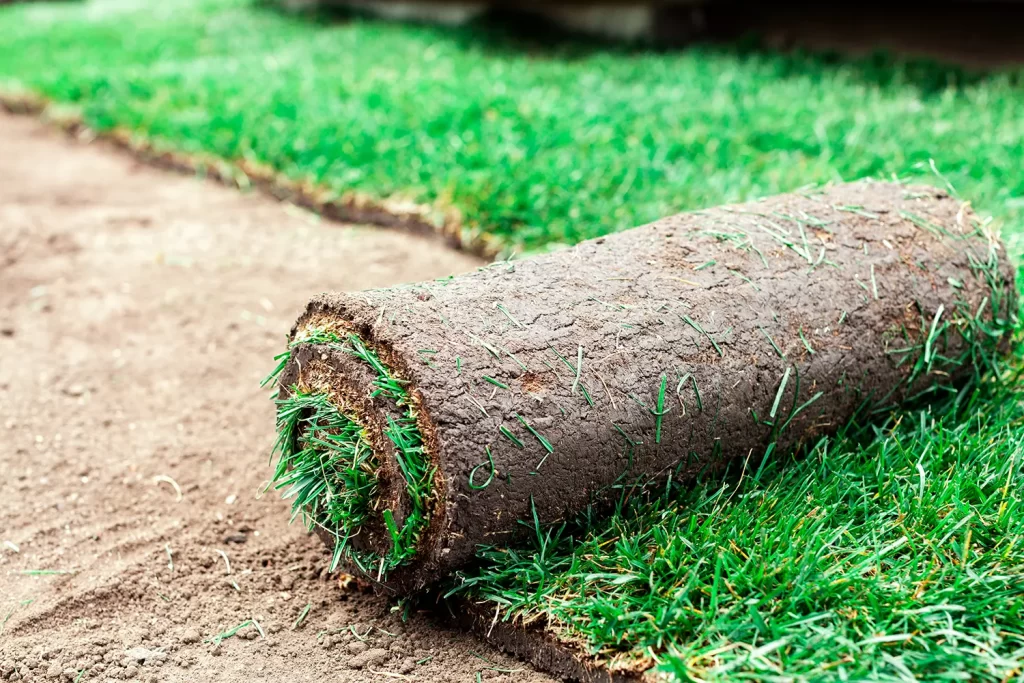
Factors to Consider When Choosing Strong Grass
Selecting the best turf for high-traffic areas isn’t just about choosing the toughest grass—it’s about finding the right balance for your region, soil, and conditions. Here are some factors to keep in mind:
Climate
Grass varieties fall into two main categories: cool-season and warm-season grasses. Cool-season grasses thrive in cooler climates and grow most actively in spring and fall, while warm-season grasses perform best in hot, sunny environments and have their growing season in the summer. Choosing the right type for your climate is crucial for long-term success.
Soil Type
The soil type in your yard influences how well your grass will grow. Good drainage is essential for healthy turf, so if your soil tends to hold water or become compacted, consider aerating it regularly. Some grasses, like Bermuda Grass, prefer sandy soils, while others, like Kentucky Bluegrass, can tolerate a variety of soil conditions as long as they are well-drained.
Sunlight
Different grasses have varying light requirements. Some, like Bermuda and Zoysia, need full sun to thrive, while others, such as Kentucky Bluegrass, can tolerate partial shade. Knowing how much sun your high-traffic area gets will help you choose a grass that can thrive there.
Lawn Maintenance Tips for Strong Grass
Once you’ve chosen the right grass for your high-traffic area, lawn care and maintenance are essential to keep it looking lush and healthy. Here are some maintenance tips to help your grass thrive:
Watering
Proper watering is critical to establishing deeper roots and maintaining a healthy, strong lawn. Water deeply and infrequently to encourage your grass to develop roots that can withstand heavy use. This is especially important in warm-season climates where heat and drought can cause stress.
Mowing
Regular mowing at the correct mowing height is crucial to keeping your grass thick and resilient. For most grasses, a height of 2-3 inches is ideal, but check specific recommendations for your grass variety. Be sure not to cut more than one-third of the grassblade at a time to prevent stress.
Aeration
High-traffic areas often experience soil compaction, which can hinder root growth. Aerating your lawn once or twice a year helps reduce compaction and improves air and water flow to the roots, resulting in a healthier lawn.
Overseeding
Overseeding with a grass seed mix can help fill in bare spots and maintain a thick, resilient lawn in areas with extreme wear. This is especially helpful in high-traffic areas where grass may wear down over time.
Choose the Right Turf
Choosing suitable grass for high-traffic areas can make all the difference in maintaining healthy lawn that stands up to heavy use. Whether dealing with daily foot traffic in a busy backyard or managing a sports field, selecting durable grass types like Kentucky Bluegrass, Perennial Ryegrass, Bermuda Grass, or Zoysia Grass will ensure your turf looks great year-round. Combine smart grass selection with proper lawn maintenance, and you’ll enjoy a beautiful, strong lawn that can withstand anything life throws its way.
For expert advice and premium products to keep your lawn thriving, contact Lavington Turf Farms today and take the first step towards a perfect, high-traffic lawn.
7 Common Turf Installation Mistakes to Avoid

Installing turf can transform your yard into a lush, green oasis. Whether you’re using natural grass or opting for an artificial lawn, proper installation is crucial to making sure your lawn looks great and stays healthy for years to come. However, turf installation can be tricky, and mistakes can lead to long-term problems that might be expensive to fix. This guide highlights some common mistakes to avoid when installing both natural and synthetic turf, ensuring your lawn thrives.
1. Poor Site Preparation
One of the most common mistakes during turf installation is poor site preparation. It’s tempting to skip steps, especially when you’re eager to lay artificial grass, but proper preparation is essential for success.
Begin by clearing the area of debris, rocks, and weeds. Neglecting to clear these obstacles may create an uneven surface, which could impact the overall look and function of your lawn. Use a landscape rake to level the ground and remove any roots that might cause lumps or bumps.
For artificial turf installation, you’ll also want to prepare the base with a layer of crushed stone or decomposed granite. This helps with drainage and provides a firm foundation for the synthetic grass to lie on. Neglecting this step can result in poor water drainage, leading to puddles or turf that shift over time.
2. Ignoring Soil Quality
Soil quality is crucial to the overall success of natural turf installation. If the soil lacks nutrients or proper drainage, your grass won’t thrive. Test the soil and consider adding compost or organic matter to improve its quality. Poor soil can lead to weak root growth, which can cause the grass blades to wilt and the lawn to thin out over time.
For artificial grass installation, the quality of the base is equally important. Make sure the base is compacted and smooth before laying the turf. For areas with high foot traffic, use landscape anchors or galvanized nails to secure the turf and prevent shifting.
3. Incorrect Turf Selection
Choosing the wrong type of turf for your yard is a common and costly mistake. For natural turf, you’ll want to select a variety suited to your climate and soil type. Some grasses require more sunlight, while others do better in shaded areas. Selecting the wrong turf can result in patchy growth or grass that requires more maintenance than you anticipated.
Similarly, for synthetic turf, it’s important to select a product designed for your specific needs. Whether you’re installing an artificial lawn in a backyard or a sports field, the type of synthetic grass you choose will impact durability and appearance. If you expect heavy foot traffic, opt for a more durable product with stronger fibres.
4. Installing Turf on Uneven Ground
Laying turf on uneven ground is another mistake that can ruin your lawn. An uneven surface can cause bumps, gaps, and drainage issues, which can affect the longevity of your lawn. When preparing for artificial turf installation, ensure the surface is level and smooth. Use a landscape rake to level the soil or base material. If you notice any dips or raised areas, address them before proceeding.
When installing synthetic turf, make sure to check the fit as you go. Lay the turf out and adjust it to the desired shape before securing it with landscape anchors or galvanized nails. If the surface is uneven, you’ll end up with areas that are too tight or too loose, causing premature wear and tear.
5. Incorrect Seaming Techniques
A proper seam is essential to creating a natural-looking artificial lawn. Seaming is the process of joining two pieces of synthetic turf together. One common mistake is cutting the turf incorrectly or using the wrong tools. Use a sharp utility knife to trim the edges, ensuring that the length of the seam matches precisely.
Another mistake is using inadequate seaming materials. Instead of using staples or nails alone, employ seaming tape and adhesive to create a strong, invisible bond between the turf sections. This will ensure that the seam remains hidden, and the grass blades stand up naturally. Take your time with the seam, and check the fit often to make sure it’s aligned correctly.

6. Incorrect Watering After Installation
For natural turf, watering is a crucial step in the installation process. Failing to water adequately after installation can result in weak roots, leading to dry, brittle grass. Make sure to water the new turf consistently and deeply in the first few weeks to help it establish strong roots.
Artificial grass installation is not about watering but about adding silica sand infill. The infill is important for stabilizing the turf, ensuring the blades stand upright, and providing cushioning underfoot. Silica sand is a popular choice for infill because of its weight and texture, helping to hold the turf in place and protect it from wear in high-traffic areas.
7. Not Allowing Enough Time for Turf to Establish
A common mistake in both natural and artificial turf installation is failing to allow enough time for the turf to establish properly. For natural turf, this means not giving the grass time to root before walking on it or mowing it. Walking or mowing too early can damage the delicate roots, causing long-term damage.
For artificial grass installation, it’s essential to give the turf time to settle. Allow the synthetic turf to rest for a day or two before trimming it to the desired shape or securing it fully. This resting period allows the turf to adjust to the temperature and prevents future wrinkling or uneven surfaces.
In Summary
Turf installation, whether natural or synthetic, requires attention to detail and proper technique. By avoiding these common mistakes—such as poor site preparation, ignoring soil quality, incorrect turf selection, and improper seaming—you can ensure a beautiful, long-lasting lawn. Whether you’re laying natural grass or installing an artificial lawn, take the time to do it right. Proper preparation, installation, and aftercare are key to avoiding costly repairs and ensuring your turf thrives. For a flawless finish and optimal performance, consider consulting professionals who specialize in turf installation to help you avoid these pitfalls. Contact us today!
How to Lay Turf Around Obstacles
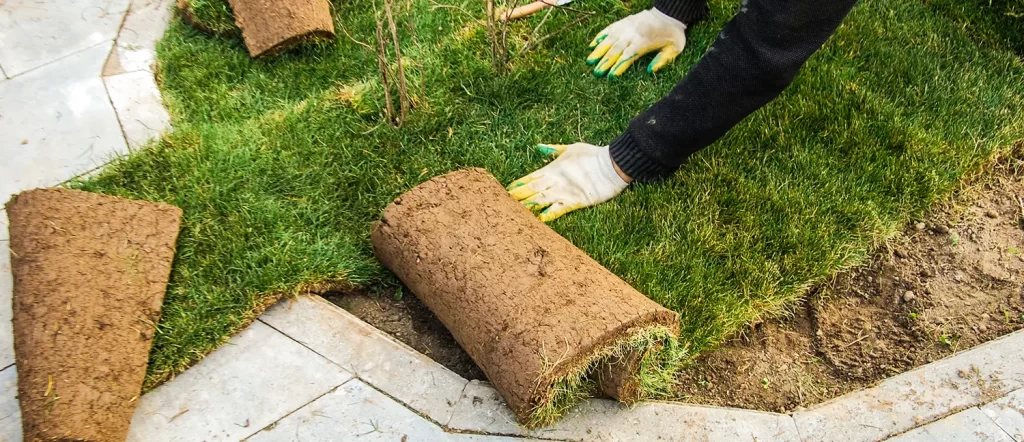
Laying turf can transform your garden into a lush, green paradise. However, the process becomes a bit more challenging when you have obstacles like trees, paths, or corners. You can seamlessly lay turf around these features with the right approach, creating a flawless landscape. In this step-by-step guide, we’ll explore how to navigate these obstacles and ensure your turf makes perfect contact with the soil to promote healthy growth.
Preparing the Area
Before you start laying turf, it’s crucial to prepare the ground properly. The first step is removing weeds, rocks, old turf, and any debris that might prevent the new turf from establishing a strong connection with the soil. This ensures your lawn will have a uniform and smooth finish.
Next, improve the soil surface by adding organic matter or topsoil, which enhances drainage and nutrient availability. A well-prepared soil base is critical to the success of your newly laid turf, especially around obstacles where roots and other elements can disrupt the turf’s ability to thrive.
Lastly, take the time to lay out a precise plan. Measure the area and consider the shape of the obstacles, making sure to account for the space around trees, paths, and corners. Planning is essential to avoid gaps and ensure proper turf placement.
Laying Turf Around Trees
Laying turf around trees requires extra care due to the presence of roots and shade. The key is to minimize disruption to the tree while ensuring the turf can establish itself. Start by clearing the soil around the base of the tree, removing any debris and levelling the surface. Be cautious when digging so as not to damage the tree roots.
When cutting the turf, use a sharp spade or knife to carefully shape the pieces to fit around the tree’s base. Make sure the turf makes good contact with the soil to encourage strong root growth.
It’s also important to select turf that tolerates shade if the tree’s canopy blocks sunlight. After the turf is laid, lightly press it down to ensure it has a solid connection to the soil, then thoroughly water your lawn to help the roots settle.
Finally, avoid walking on the newly laid turf for at least 24 hours to prevent shifting or uneven rooting, especially around sensitive areas like tree bases.
Laying Turf Around Paths
When laying turf next to paths, attention to detail is critical to achieving a clean, professional look. Start by ensuring the edges of the path are well-defined and tidy. You’ll want to prepare the ground around the path by levelling the soil and ensuring there are no gaps or uneven areas.
Turf with a spade should be carefully cut to fit along the edges of the path. Make sure the pieces of turf are snug against the path, with no visible gaps. Once laid, press the turf firmly into place to ensure proper contact with the soil.
To maintain a neat appearance over time, consider placing a small border of stones or mulch between the turf and path to prevent overgrowth. Regularly trim the edges to keep the boundary between the turf and the path crisp and clear.
After laying, thoroughly water the area. Just like when laying turf around trees, avoiding walking on the newly laid turf, especially along the edges, is vital to prevent shifting or damage. Over the coming weeks, ensure the grass remains well-watered and healthy so it can firmly root next to the path.
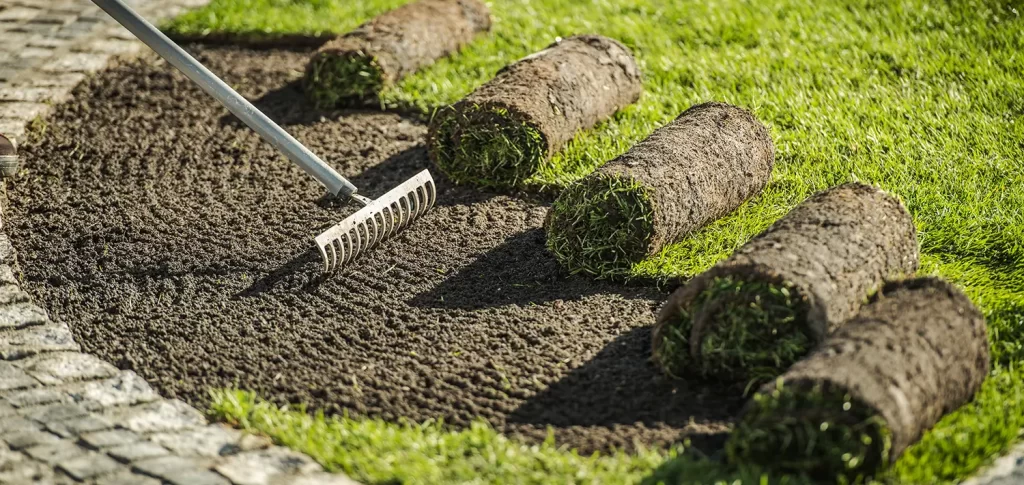
Laying Turf Around Corners
Laying turf around corners requires patience and precision. Corners often pose a challenge because it’s easy for the turf to shift or pull away if not carefully installed. The trick is to cut the turf accurately to fit the shape of the corner without stretching or forcing it into place.
Use a spade to make sharp, precise cuts when cutting turf for corners. Lay the turf so that the edges meet neatly without overlapping or leaving gaps. Once laid, gently press down the turf to ensure strong contact with the soil surface, which will help the turf settle in and establish itself.
Corners can be prone to pulling away or drying out faster than other areas, so it’s essential to water your lawn thoroughly after installation. This will help the turf root deeply and maintain its shape. Be careful not to overwater, but make sure the turf stays moist during the initial rooting phase.
Allow the turf to establish for about two to three weeks before you start mowing your new lawn. During this period, avoid walking on the turf, especially around corners, to prevent any damage to the developing roots.
General Tips and Tricks
To ensure your newly laid turf thrives, there are a few key tips to keep in mind:
- Turf Handling: Lay the turf as soon as possible after delivery to prevent it from drying out. If you can’t lay it immediately, keep it moist and out of direct sunlight.
- Watering: Water the newly laid turf immediately and continue to keep it well-watered for the first few weeks. Turf needs a lot of moisture in the early stages to establish roots.
- Maintenance: Once the turf has rooted, begin a regular mowing schedule, but don’t mow too short on the first cut—gradually lower the height over time.
Ensure a Perfect Lawn
Laying turf around obstacles like trees, paths, and corners may seem daunting, but with careful planning and execution, it’s entirely achievable. By following this step-by-step approach, ensuring strong contact with the soil, and properly preparing the ground, you can create a lush, green lawn even in areas with tricky obstacles. Remember to give your newly laid turf the right care, from watering to mowing, and avoid common mistakes like walking on it too soon. With patience and attention to detail, your turf will flourish, enhancing the beauty of your lawn.If you’re ready to transform your lawn or have questions, don’t hesitate to contact us for expert advice and professional turf-laying services.
How to Make Your Lawn Look Like a Sports Field Lawn

A pristine, well-manicured lawn can elevate the look of any property, but there’s something especially appealing about a lawn that mimics the lush, green look of a professional sports field. Whether you’re hosting backyard games or simply enjoying the aesthetic of a perfectly striped lawn, achieving this look is possible with the right approach. This blog will walk you through the essential steps to make your lawn look like a professional sports turf field.
Understanding the Key Features of a Sports Field Lawn
A sports field lawn stands out due to its dense, uniform appearance, vibrant colour, and durability. These characteristics are not just for aesthetics; they ensure that the lawn can withstand the heavy foot traffic and wear that sports fields typically endure. To achieve this in your own yard, it’s important to understand what makes sports field grass unique.
The most notable feature of sports field grass is its density. A thick, tightly woven turf not only looks better but also provides a more resilient surface. This density helps prevent weeds from taking hold and reduces the amount of maintenance required to keep the lawn looking its best.
Uniformity is another key aspect. A sports field lawn should have a consistent texture and colour, free from patches of different grass types or bare spots. This uniform appearance is what gives sports fields their professional look.
Finally, durability is crucial. Sports fields are designed to endure constant use, and the grass must be tough enough to handle regular foot traffic without becoming damaged. Selecting a grass variety that is known for its durability will be key to achieving this.
Selecting the Right Turf Variety
Choosing the right natural turf variety is perhaps the most important decision you’ll make when aiming for a sports field lawn. The type of grass you select will determine how well your lawn stands up to wear, its appearance, and the amount of maintenance required.
When selecting a turf variety, consider your local climate, soil type, and how much sunlight your lawn receives. Some grass types thrive in cooler climates, while others are better suited for warmer regions. Additionally, some grasses are more shade-tolerant, which is important if your lawn has areas that don’t receive full sun throughout the day.
For a sports field lawn, you’ll want to choose a grass that is known for its density and durability. Kentucky Bluegrass is a popular choice for cooler climates due to its rich colour and ability to form a dense sod. Bermuda Grass, on the other hand, is often used in warmer climates and is known for its toughness and quick recovery from damage.
Another option to consider is a blend of different grasses. Blended turf can offer the best qualities of each grass type, providing a more versatile lawn that performs well in various conditions.
Preparing Your Soil for a Sports Field Lawn
Before laying down your turf, it’s essential to prepare the soil properly. Good soil preparation ensures that your lawn will establish quickly and grow uniformly, which is crucial for achieving that sports field look.
Start by testing your soil’s pH level. Most turf grasses thrive in slightly acidic to neutral soil (pH 6.0 to 7.0). If your soil is too acidic or alkaline, you’ll need to amend it accordingly. Lime can be added to increase the pH, while sulphur can lower it.
Next, focus on improving soil structure. If your soil is compacted, aeration is necessary. Aeration involves removing small plugs of soil from the lawn to permit air, water, and nutrients to penetrate deeper into the ground. This process helps promote root growth, leading to a healthier and more resilient lawn.

Turf Installation Techniques for a Uniform Look
Proper turf installation is critical to achieving a uniform and professional-looking lawn. Even the best turf can fall short if it’s not installed correctly.
Begin by levelling the soil. Use a rake to smooth out any bumps or impressions, ensuring an even surface. This will help prevent water from pooling in low areas and ensure that the turf roots make good contact with the soil.
Water the newly laid sod immediately and thoroughly. The first few weeks are critical for root establishment, so keep the soil consistently moist during this period. Avoid walking on the lawn until the roots have had time to anchor themselves securely in the soil.
Maintenance Tips for Keeping Your Lawn Game-Ready
Once your lawn is installed, maintaining it to keep that sports field appearance requires regular care. Consistent mowing, fertilizing, and watering are key components of lawn maintenance.
Mowing should be done frequently, but never cut more than one-third of the grass blade at a time. Keeping the grass slightly longer (around 2.5 to 3 inches) helps to promote root growth and retain moisture, which is significantly important during hot, dry periods.
Fertilization is crucial for maintaining the lawn’s vibrant colour and density. Use a balanced fertilizer with the appropriate nutrients for your grass type. Regular feeding throughout the growing season will keep your lawn healthy and resilient.
Watering should be deep and infrequent instead of shallow and frequent. This supports the grass in developing deep roots, which are better able to withstand drought and wear. Aim to water your lawn early in the morning to decrease evaporation and prevent fungal diseases.
One of the most iconic features of a sports field lawn is the striping pattern. This can be achieved by mowing in alternating directions, which bends the grass blades in different directions, creating a light and dark pattern. A lawn roller or striping kit attached to your mower can enhance this effect, giving your lawn that professional sports field look.
Enhancing Durability and Resilience
Enhancing your lawn’s durability and resilience is important to keep it looking like a sports field. Regular overseeding can help maintain turf density, fill in bare spots, and prevent weeds from taking over.
Consider implementing a maintenance schedule that includes aeration, overseeding, and topdressing to keep your lawn in peak condition. These practices will improve the lawn’s appearance and ability to withstand heavy use.
Achieving the Perfect Sports Field Lawn
Creating a lawn that looks like a professional sports field is achievable with the right turf variety, proper installation, and diligent maintenance. By following these guidelines, you can transform your lawn into a lush, green oasis that rivals the best sports fields.
For expert advice, premium turf options, and professional services to help you achieve the perfect sports field lawn, consider reaching out to Lavington Turf Farms. Our high-quality turf varieties and commitment to customer satisfaction make us the ideal partner. Contact us today for more information or to explore your options.
How to Treat and Prevent Turf Weeds

Maintaining a beautiful lawn can be challenging. Keeping it beautiful takes effort, especially when it comes to controlling weeds. Weeds not only make your lawn look messy but also steal nutrients, water, and sunlight from your grass. Knowing how to prevent weeds is essential for a healthy, good-looking lawn. In this blog, we’ll share simple tips for both preventing and getting rid of turf weeds.
Understanding Turf Weeds
Turf weeds are unwanted plants that invade lawns, disrupting the uniformity and health of the turf. Common types of turf weeds include dandelions, crabgrass, clover, and chickweed. These invaders can outcompete turfgrass for essential resources, leading to weakened grass and an unsightly lawn. Recognizing the types of weeds and their impact on turf health is the first step in effective weed management.
Prevention Strategies
Proper Lawn Care Practices
- Regular Mowing: Maintaining the correct mowing height for your turfgrass is crucial. Longer grass shades the soil, making it harder for weed seeds to germinate. Mow regularly, but avoid mowing the grass too short, as this can stress the turf and create an environment conducive to weed growth.
- Watering Techniques: Watering deeply and infrequently encourages deep root growth, making the turf more resilient to drought and less hospitable to weeds. Watering in the early morning is optimal because it gives the grass time to dry quickly, reducing the risk of fungal diseases.
- Fertilization: Applying the right type and amount of fertilizer strengthens turfgrass, making it more competitive against weeds. Conducting a soil test can identify the specific nutrients your lawn needs.
Soil Health and Preparation
- Soil Testing: Regular soil testing provides insights into pH levels and nutrient deficiencies. Adjust the soil according to the test results to create the best possible growing conditions for turfgrass.
- Aeration: Aerating the soil alleviates compaction, promotes root growth, and enhances water and nutrient absorption. This process entails making small holes in the soil to enable air, water, and nutrients to penetrate the grass roots.
- Topdressing: Applying a thin layer of organic matter or soil over the lawn helps improve soil structure, promotes microbial activity, and encourages healthy turf growth.
Choosing the Right Turfgrass
- Selecting a turfgrass variety suited to your climate and soil conditions can significantly reduce weed problems. Some grass types have better weed resistance and can outcompete weeds more effectively. Ensure proper planting techniques to establish a dense, healthy lawn.
Mulching and Ground Covers
- Benefits of Mulching: Mulch helps to retain soil moisture, regulate temperature, and suppress weed growth. Organic mulches like bark, wood chips, or compost decompose over time, enriching the soil.
- Ground Covers: In areas where turfgrass is difficult to maintain, consider using ground covers such as creeping thyme or clover, which can provide a green, weed-resistant alternative.
Using Pre-emergent Herbicides
- Pre-emergent Herbicides: These chemicals prevent weed seeds from germinating and are most effective when applied before weeds emerge. Timing is critical; apply pre-emergent herbicides in early spring and fall, following label instructions for best results.

Treatment Methods for Existing Weeds
Manual Weed Removal
- Hand-pulling: Hand-pulling weeds can be effective for small infestations. Make sure to remove the entire root to prevent regrowth. Tools like dandelion diggers can make this task easier.
- Pros and Cons: Manual removal is environmentally friendly and effective for small areas, but it can be labour-intensive and less practical for large lawns.
Post-emergent Herbicides
- Types and Uses: Post-emergent herbicides target weeds that have already germinated. Selective herbicides kill specific weed types without harming turfgrass, while non-selective herbicides kill any vegetation they contact.
- Application Methods: Follow label instructions carefully. Apply when weeds are actively growing, and avoid windy days to prevent drift.
Organic Weed Control
- Natural Remedies: Solutions like vinegar, boiling water, or corn gluten meal can control weeds without chemicals. Vinegar can be sprayed directly on weeds, while boiling water can be poured over them.
- Benefits: Organic methods are environmentally friendly and safe for children and pets, but they may require more frequent applications and persistence.
Integrated Weed Management
- Combining prevention and treatment strategies offers the most effective weed control. Regular monitoring, adjusting techniques as needed, and maintaining overall lawn health create a resilient turf that resists weed invasion.
Seasonal Considerations
Weed control strategies should be tailored to the seasons:
- Spring: Apply pre-emergent herbicides and start regular mowing.
- Summer: Focus on proper watering and mowing practices. Treat any emerging weeds with post-emergent herbicides.
- Fall: Aerate, fertilize, and apply pre-emergent herbicides. Remove any existing weeds manually or with herbicides.
- Winter: Although weed control is less active, preparing your lawn in winter lays the foundation for a healthy lawn in spring.
Common Mistakes to Avoid
- Overwatering and Under-fertilizing: Both practices can weaken turf and encourage weed growth. Follow the recommended guidelines for your turfgrass type.
- Ignoring Soil Health: Regular soil testing and amendments are essential for a healthy lawn.
- Incorrect Herbicide Application: Misapplication can harm your lawn and reduce herbicide effectiveness. Always follow label instructions.
Maintain a Weed-Free Lawn
Maintaining a weed-free lawn requires a proactive approach that combines proper lawn care, soil health, and strategic weed control methods. By understanding how to prevent weeds and treat existing ones, you can enjoy a lush, healthy lawn year-round. For personalized advice, consider consulting with a local lawn care expert.
By following these guidelines and maintaining a consistent lawn care routine, you can prevent weeds and enjoy a beautiful, healthy lawn that enhances the appeal of your home. For expert advice and high-quality turf solutions, reach out to Lavington Turf Farms, where we prioritize sustainable farming practices to ensure your lawn remains beautiful and healthy.
Choosing the Right Grass Seed for the Okanagan Climate: Turf for Local Climate
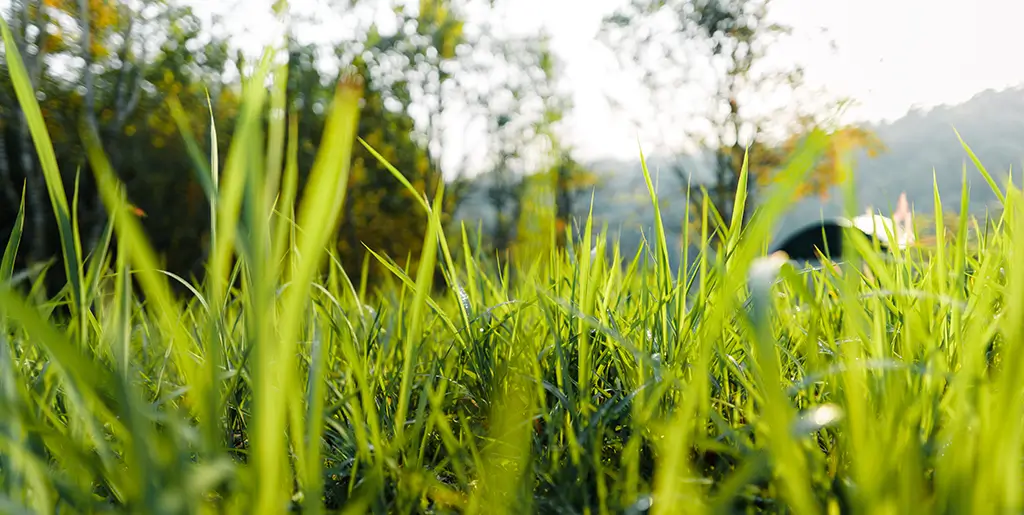
Maintaining a lush, green lawn is a sense of pride for majority of homeowners in the Okanagan. However, the challenge of grass dying off during the offseason can be frustrating and disheartening. One common mistake is using grass seed sourced from regions with different climates, such as Vancouver. This blog explores why buying grass seed from Vancouver may not be the best choice for the Okanagan and emphasizes the importance of choosing the right grass seed for the Okanagan’s unique climate.
Understanding the Okanagan Climate and Its Impact on Grass
The Okanagan Valley, with its hot summers and cold winters, presents a unique set of challenges for maintaining a healthy lawn. The region experiences extreme temperature variations, with scorching heat in the summer and freezing conditions in the winter. These climatic extremes can stress grass plants, leading to off-season die-off if the wrong seed is chosen.
Different grass species have varying tolerances to temperature, moisture, and soil conditions. For instance, cool-season grasses like Kentucky bluegrass and fescues thrive in cooler climates and have durable recovery for both drought and cold conditions. Conversely, warm-season grasses such as Bermuda grass can handle the heat but may not survive the cold winters.
Common Problems with Using Grass Seed from Different Regions
One of the key issues with using grass seed sourced from Vancouver or other regions is that these seeds are not tailored to the Okanagan’s specific climate. Vancouver has a milder, more temperate climate, which means that grass varieties suited for Vancouver may not be able to withstand the Okanagan’s harsher conditions.
Using inappropriate grass seed can lead to a range of problems:
- Offseason Die-Off: Grass that isn’t suited to the local climate may not survive the extreme temperatures of the offseason, leading to a patchy, unhealthy lawn.
- Increased Maintenance: Grass that struggles to adapt to the local climate often requires more water, fertilizer, and care, increasing the time and cost of lawn maintenance.
- Poor Lawn Health: Grass that is not climate-compatible may be more susceptible to diseases and pests, resulting in a weaker, less resilient lawn.
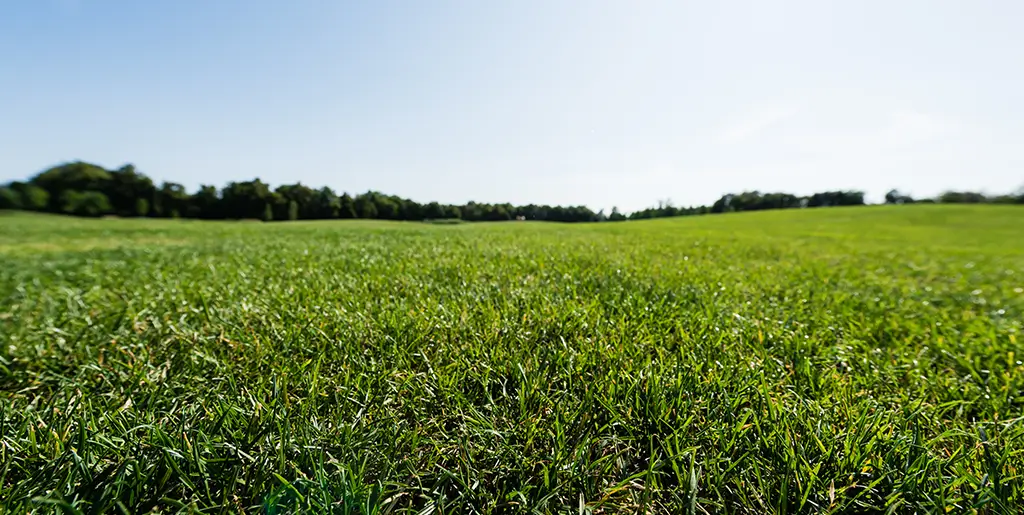
Turf for Local Climate: Benefits and Importance
Choosing natural grass seed that is specifically adapted to the Okanagan’s climate—known as “turf for local climate”—offers numerous benefits. Here are some key advantages:
- Enhanced Resilience: Grass varieties suited to the local climate are better equipped to handle the region’s temperature extremes and varying moisture levels, resulting in a healthier, more resilient lawn.
- Reduced Maintenance: Climate-compatible grass requires less water, fertilizer, and overall care, making it easier and more cost-effective to maintain.
- Improved Lawn Health: Local grass varieties are less susceptible to diseases and pests, resulting in a stronger lawn and enchanced aesthetic appeal.
Identifying the Right Grass Seed for the Okanagan
Selecting the right grass seed for the Okanagan involves understanding the specific requirements of the region’s climate. Here are some tips to help you choose the best grass seed for your lawn:
- Research Local Varieties: Investigate grass species that are known to thrive in the Okanagan. Common choices include drought-tolerant varieties like Kentucly Bluegrass, Bermuda grass, Buffalo grass, and fine fescues.
- Consult Local Experts: Visit local nurseries or consult with turf providers to get advice on the best grass seed for your area. These experts can offer valuable insights into which varieties will perform best in the Okanagan’s climate.
- Check Seed Labels: When purchasing grass seed, check the label to ensure that it is suitable for your climate zone. Look for seeds that mention drought tolerance and temperature resilience.
Best Practices for Grass Offseason Care in the Okanagan
Proper off-season care is essential for maintaining a healthy and beautiful lawn throughout the year. Here are some best practices to help your grass survive the Okanagan’s harsh offseason conditions:
- Soil Preparation: Aerate and add organic matter to ensure your soil is well-prepared. This helps improve drainage and provides a better-growing environment for your grass.
- Watering: Adjust your watering schedule to match the season. In the hot summer months, water deeply but infrequently to encourage deep root growth. In the winter, reduce watering to prevent waterlogging and root rot.
- Fertilization: Use a balanced fertilizer to provide essential nutrients for your grass. Avoid over-fertilizing, as it can lead to excessive growth and increased vulnerability to pests and diseases.
- Protection: Mulch or lawn blankets can help insulate the soil and reduce temperature fluctuations, protecting your lawn from extreme temperatures.
Choose the Right Grass Seed
Choosing the right grass seed for the Okanagan climate is crucial for maintaining a healthy, vibrant lawn year-round. By avoiding grass seed sourced from regions with different climates, such as Vancouver, and opting for climate-compatible varieties, you can prevent off-season die-offs and enjoy a resilient, low-maintenance lawn.
Remember, the key to a thriving lawn in the Okanagan is selecting grass seed that is tailored to the local climate. Embrace the benefits of turf for local climate and invest in grass seed that is suited to the Okanagan’s unique conditions.
For further guidance, consult with local landscapers or turf providers to select the best grass seed for your lawn. By making informed choices, you can achieve a beautiful, sustainable lawn that thrives in the Okanagan climate. For personalized advice and high-quality grass seed, feel free to contact us at Lavington Turf Farms.
Misconceptions and Myths About Turf: What You Need to Know

Natural turf, widely used for lawns, sports fields, and landscapes, is often surrounded by misconceptions. Understanding the facts about natural turf can help you make informed decisions and enjoy the benefits of a lush, green lawn. In this blog, we will debunk some of the most common myths about turf.
Myth 1: Natural Turf is Always High Maintenance
A common belief is that natural turf requires extensive maintenance. While some varieties of natural grass do demand more care, advancements in turf technology have led to the development of low-maintenance options.
Traditional natural turf does need regular mowing, watering, fertilizing, and pest control. However, modern grass varieties are designed to be more resilient and require less attention. For instance, drought-tolerant grasses can thrive with minimal watering, and pest-resistant varieties reduce the need for chemical treatments.
Additionally, implementing smart lawn care practices can further reduce maintenance. Using mulch mowing, where grass clippings are left on the lawn to decompose, provides natural fertilization. Efficient irrigation systems, like drip or soaker hoses, target the root zone and conserve water, making natural turf easier to manage.
Myth 2: Natural Turf is Bad for the Environment
Another prevalent myth is that natural turf is harmful to the environment due to the resources required to maintain it. While it’s true that traditional lawn care can involve significant water usage and harmful chemical treatments, sustainable practices can mitigate these impacts.
Modern lawn care emphasizes environmentally friendly approaches. For instance, organic fertilizers and integrated pest management (IPM) reduce chemical reliance. By choosing drought-resistant grass varieties, you can significantly cut down on water usage. Additionally, practices like rainwater harvesting and greywater recycling can provide sustainable irrigation solutions.
Furthermore, natural turf products offer eco-friendly benefits that synthetic alternatives do not. It contributes to cooling the environment, reducing the urban heat island effect, and providing habitats for various species. Natural turf also plays a role in carbon sequestration, absorbing CO2 from the atmosphere and storing it in the soil.
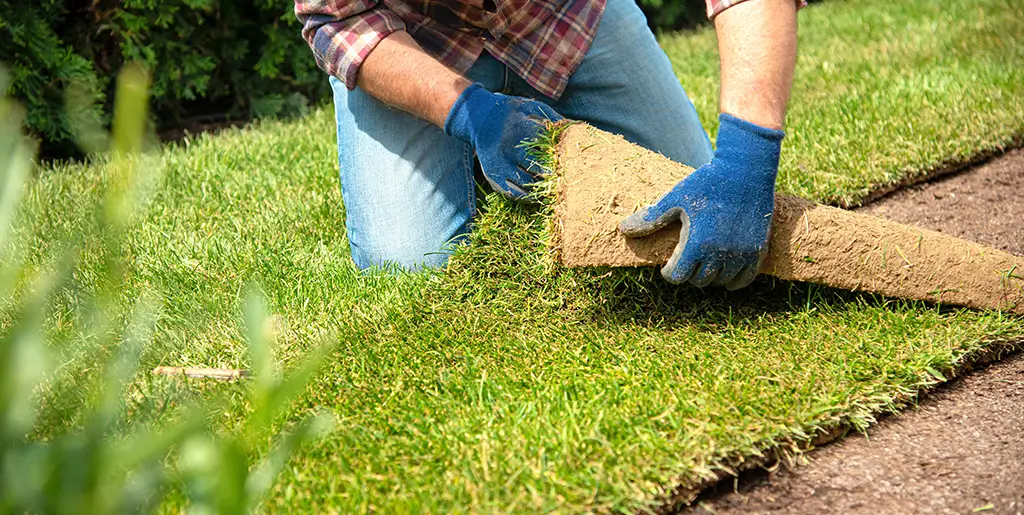
Myth 3: Natural Turf Causes More Injuries in Sports
There is a belief that playing on natural turf leads to more injuries compared to synthetic alternatives. This myth has persisted despite evidence suggesting otherwise.
Research on injury rates for athletes playing on natural turf versus synthetic surfaces has shown that well-maintained natural turf can be just as safe, if not safer, than synthetic options. Natural turf provides a softer landing surface, reducing the risk of impact injuries. It also offers better traction, which can prevent slips and falls.
Sports organizations and athletes often prefer natural turf due to its ability to regenerate and repair itself, offering consistent playing conditions. Proper maintenance, such as aerating the soil and ensuring adequate moisture levels, can enhance the safety and performance of natural turf fields.
Myth 4: Natural Turf Doesn’t Look Good Year-Round
A common misconception is that natural turf doesn’t maintain its appearance throughout the year. While it’s true that natural grass lawns can be affected by seasonal changes, proper care can keep them looking good year-round.
Choosing the right grass variety for your climate is crucial. Cool-season grasses, like Kentucky bluegrass and fescue, thrive in cooler temperatures, while warm-season grasses, such as Bermuda and zoysia, are better suited for hot climates. Overseeding with a mix of cool and warm-season grasses can help maintain a green lawn throughout the year.
Regular lawn care practices, including fertilizing, watering, and mowing, play a significant role in maintaining the appearance of natural turf. Soil health is also vital; adding organic matter and ensuring proper pH levels can support robust grass growth.
Myth 5: Natural Turf is Expensive
Many people believe that maintaining a natural turf grass is too expensive. However, when managed correctly, natural turf can be a cost-effective solution.
The upfront costs of installing natural turf can be lower than those of synthetic grass alternatives. Smart practices can manage long-term maintenance costs, such as water, fertilizer, and pest control. Efficient irrigation systems, organic lawn care, and choosing the right grass variety can reduce overall expenses.
Comparing the long-term costs of natural turf to synthetic options reveals that natural turf can be more economical. The self-repairing nature of natural grass means fewer expenses for repairs and replacements. Additionally, the environmental benefits, such as improved air quality and biodiversity, offer added value that synthetic turf cannot match.
Find Your Turf Solution
In summary, many myths about turf are based on outdated information or misconceptions. Modern natural turf solutions offer a range of benefits and can be tailored to suit different needs and preferences.
By debunking these common myths, we hope to provide you with the information needed to make an informed decision about your turf options. Natural turf can meet your needs, whether you are looking to reduce maintenance, minimize environmental impact, enhance safety, or achieve a natural look and feel.For personalized advice and to explore the best natural turf options for your specific situation, consider consulting with turf professionals. We can provide expert guidance and help you find the perfect turf solution to achieve your desired results.
How to Choose the Best Turf Near Me: A Comprehensive Budget Guide
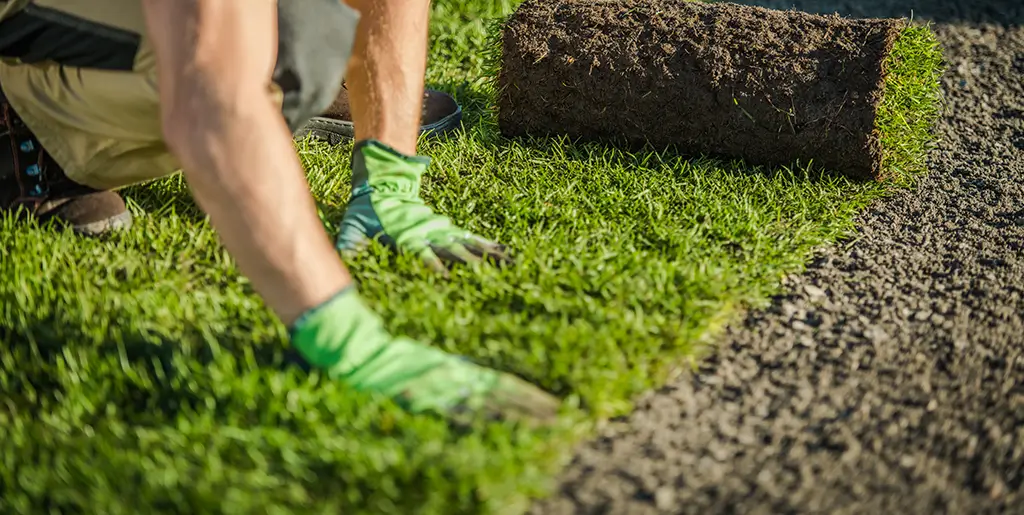
A well-maintained lawn enhances property value and aesthetic appeal, making it a vital feature for many homeowners. However, finding the right turf that fits both your needs and budget can be challenging. This comprehensive guide will help you navigate the process of choosing the best turf near me while sticking to a budget.
Understanding Your Needs
Assessing Lawn Size and Use
The first step in choosing the best turf is to assess your lawn’s size and intended use. The size of your lawn will directly impact the cost, as larger areas will require more turf. Additionally, consider how you plan to use your lawn. Will it be a space for recreational activities, a serene garden area, or something else? The usage will determine the type of turf that best suits your needs.
Climate Considerations
Local climate plays a crucial role in selecting the right turf. Different grasses thrive in different climates. For instance, Bermuda grass is excellent for warm climates, while Kentucky Bluegrass is ideal for cooler regions. Understanding your climate will help you choose a turf that not only fits your budget but also requires minimal maintenance.
Soil Type and Preparation
Soil quality is another essential factor. Good soil ensures healthy turf growth, reducing the need for costly fertilizers and treatments. Perform a soil test to determine the soil’s pH and nutrient content. Based on the results, you might need to amend the soil to create an ideal growing environment for your chosen turf.
Types of Turf Available
Natural Turf
Natural turf, or natural grass, is the most traditional option. Different types of natural grasses include:
- Bermuda Grass: Ideal for warm climates, it’s durable and drought-resistant.
- Fescue Grass: Suitable for cooler climates, it stays green year-round.
- Kentucky Bluegrass: Popular in cooler regions, known for its lush, dark green colour.
Each type has its own cost and maintenance requirements. Natural turf generally has lower upfront costs but can incur higher long-term maintenance expenses, including watering, mowing, and fertilization.
Artificial Turf
Artificial turf has gained popularity because of its low maintenance and long-term cost savings. While the initial installation cost is higher, it eliminates the necessity for watering, mowing, and fertilization. Artificial turf is known for its durability and ability to withstand heavy use, making it a cost-effective option in the long run.
Hybrid Options
Hybrid turfs combine elements of natural and synthetic turfs. They offer the aesthetic appeal of natural grass with the durability and minimal maintenance of artificial turf. Although hybrid turfs can be more expensive initially, they strike a balance between cost, maintenance, and appearance.
Setting a Realistic Budget
Initial Costs vs. Long-term Costs
When budgeting for turf, it’s essential to consider both initial costs and long-term expenses. Natural turf may have a lower purchase price but higher ongoing maintenance costs. In contrast, artificial turf has a higher upfront cost but minimal maintenance expenses. Take into consideration your budget and how much you’re willing to spend over time.
Cost-saving Tips
Here are some practical tips to save money on your turf purchase:
- Buy During Sales: Look for seasonal sales and discounts at local garden centers and nurseries.
- Bulk Purchasing: Buying in bulk can often decrease the price per square foot.
- Local Suppliers: Opting for local suppliers can save on shipping and transportation costs.
Budget Breakdown
Here’s a sample budget breakdown for different types of turf:
- Natural Turf: $1 – $2 per square foot for the turf, plus $0.50 – $1 per square foot for installation and soil preparation.
- Artificial Turf: $5 – $20 per square foot, including installation.
- Hybrid Turf: $3 – $7 per square foot, with additional costs for installation.
These estimates can vary based on location, quality of materials, and other factors. Adjust your budget to meet your specific needs and conditions.
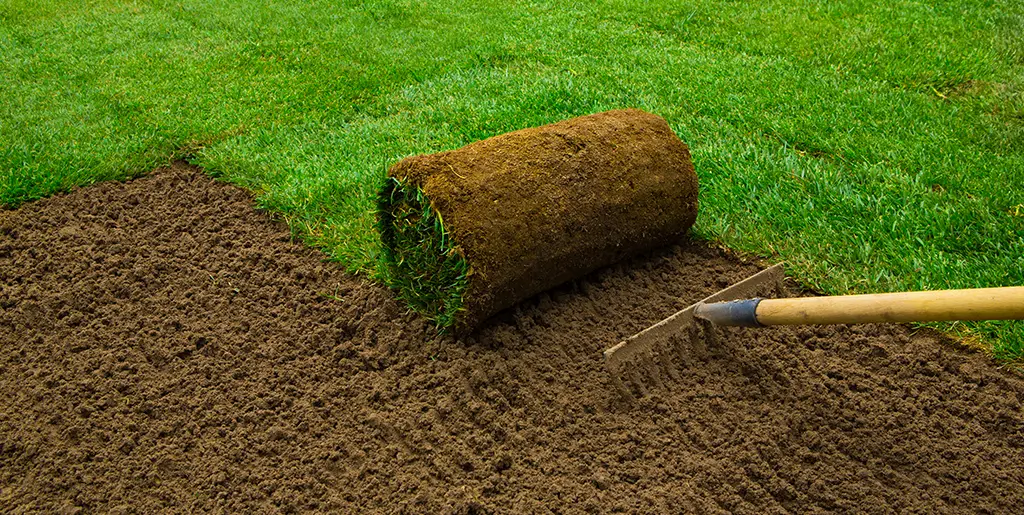
Finding the Best Deals
Researching Local Suppliers
To find the best turf near me, start by researching local suppliers. Look for online reviews and ratings, ask for referrals from friends or neighbours, and visit local garden centers to compare prices and options. By personally visiting suppliers, you can thoroughly examine the quality of the turf prior to making a purchase.
Seasonal Sales and Discounts
Taking advantage of seasonal sales can significantly reduce your costs. Many suppliers offer discounts during off-peak seasons or holiday sales. Planning your purchase around these times can yield substantial savings.
Negotiation Tips
Don’t hesitate to negotiate with suppliers. Many are willing to offer discounts, especially if you’re buying in bulk or during a slow sales period. Be polite but firm in your negotiations to secure the best deal possible.
Quality vs. Cost
Balancing Act
Balancing quality and cost is crucial to getting the best value for your money. While it’s tempting to go for the cheapest option, lower-quality turf can result in higher maintenance costs and a shorter lifespan. Invest in good-quality turf that fits within your budget to ensure long-term satisfaction.
Inspecting Turf Quality
When inspecting turf, look for the following quality indicators:
- Colour: Healthy turf should have a consistent, vibrant colour.
- Texture: It should feel soft and dense underfoot.
- Root System: A strong root system indicates healthy turf.
Inspecting these factors will help you choose the best quality turf for your budget.
Warranties and Guarantees
Warranties and guarantees provide peace of mind and protect your investment. Reputable suppliers often offer warranties on their products, covering defects and ensuring quality. Ensure you understand the terms and conditions of any warranty offered.
Installation and Maintenance
DIY vs. Professional Installation
Installing turf yourself can save money, but it requires time, effort, and some expertise. Professional installation ensures proper laying and long-term durability but comes at a higher cost. Evaluate your skills and time availability to decide which option is best for you.
Maintenance Practices
Proper maintenance is key to a beautiful, long-lasting lawn. For natural turf, this includes regular mowing, watering, fertilizing, and aeration. Artificial turf requires less maintenance but still needs occasional cleaning and brushing to maintain and keep it looking its best.
Cost-effective Maintenance Tips
Here are some tips to minimize ongoing maintenance costs:
- Water Wisely: Use efficient irrigation systems to reduce water usage.
- Mow Correctly: Keep your mower blades sharp and mow at the correct height to promote healthy growth.
- Fertilize Properly: Use slow-release fertilizers to reduce the frequency of applications.
Implementing these practices will help you maintain a beautiful lawn without overspending.
Choose the Best Turf
Choosing the best turf near me involves careful consideration of your needs, budget, and the various types of turf available. By understanding your lawn’s requirements, setting a realistic budget, and balancing quality with cost, you can find the perfect turf to enhance your property’s appeal. Remember to research local suppliers, take advantage of seasonal discounts, and prioritize quality to ensure long-term satisfaction. With these tips, you’ll be well on your way to a beautiful, cost-effective lawn that meets all your needs.
For personalized advice and top-quality turf options, consider reaching out to Lavington Turf Farms – your local experts ready to help you achieve the perfect lawn. Contact us today!
The Future of Lawn Care: Sustainable Practices and Innovations for Eco-Friendly Landscaping
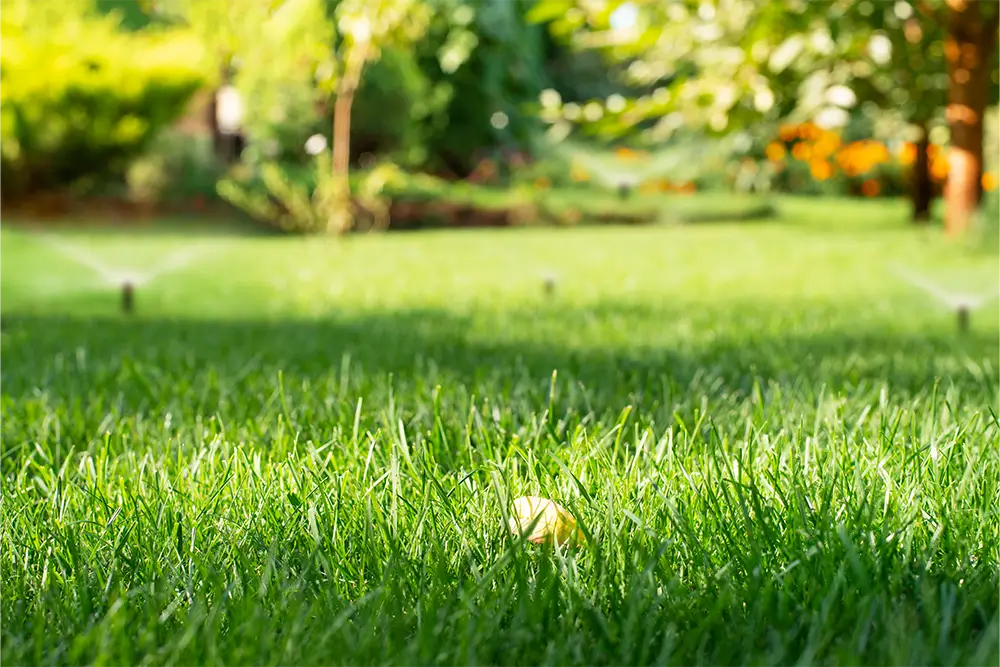
In landscaping, the concept of sustainability is gaining increasing importance. As environmental awareness grows, so does the need for eco-friendly landscaping practices. In this blog post, we’ll delve into the future of lawn care, exploring sustainable practices and innovative technologies to promote eco-friendly landscaping.
Understanding Eco-Friendly Landscaping
Eco-friendly landscaping encompasses principles aimed at reducing environmental impact while creating beautiful outdoor spaces. It emphasizes water conservation, biodiversity promotion, soil health enhancement, and energy efficiency. By prioritizing these aspects, eco-friendly landscaping seeks to minimize chemical usage and encourage natural solutions for maintaining lush lawns and vibrant landscapes.
Sustainable Lawn Care Practices
Water Conservation
Efficient irrigation techniques like drip irrigation and rainwater harvesting are crucial components of eco-friendly landscaping. Drip irrigation systems directly deliver water to the roots of plants, minimizing evaporation and runoff compared to conventional sprinkler systems. Rainwater harvesting requires collecting and storing rainwater for later use, decreasing the reliance on municipal water sources during dry periods
Moreover, incorporating smart irrigation technology can further enhance water conservation efforts. IoT-enabled sensors measure soil moisture levels and weather conditions in real time, allowing for precise adjustments to watering schedules. Automated irrigation controllers adjust watering times and durations based on environmental factors, ensuring optimal moisture levels for plant health while minimizing water waste.
Furthermore, selecting drought-tolerant grass species and implementing xeriscaping techniques can significantly reduce water consumption in landscaping. Xeriscaping involves designing landscapes that require minimal irrigation by using native plants, mulch, and efficient irrigation systems. By embracing water-efficient landscaping practices, homeowners can conserve water resources and reduce their environmental footprint.
Biodiversity Promotion
Promoting biodiversity in landscaping is essential for creating resilient ecosystems that sustain a wide variety of plant and animal species. Using native plants in the landscape design is a cornerstone of biodiversity promotion. Native plants are inherently adapted to the local climate and soil conditions, resulting in them being well-suited to flourish without the need for excessive watering or chemical inputs.
In addition to providing habitat and food sources for native wildlife, native plants contribute to the overall health of the ecosystem by supporting pollinators such as bees, butterflies, and birds. By creating pollinator-friendly habitats, homeowners can help combat pollinator decline and promote ecosystem resilience.
Furthermore, implementing habitat features such as bird feeders, bird baths, and nesting boxes can entice a range of bird species to the landscape. Birds have an essential role in controlling insect populations and dispersing seeds, further enhancing ecosystem diversity.
Soil Health Enhancement
Improving soil health is essential for maintaining healthy and resilient landscapes. Healthy soil provides a supportive environment for plant growth, helps retain moisture, and prevents erosion. Utilizing composting and organic soil amendments is a key strategy for enhancing soil health in landscaping.
Composting involves recycling organic waste materials like food scraps, yard waste, and leaves to produce nutrient-rich compost. Incorporating compost into the soil improves soil structure, increases microbial activity, and enhances nutrient availability to plants.
Moreover, reducing reliance on chemical fertilizers and pesticides helps preserve soil health and minimize environmental pollution. Organic fertilizers like compost tea, bone meal, and fish emulsion provide essential nutrients to plants without the harmful side effects of synthetic fertilizers.
Additionally, practicing soil conservation techniques such as mulching, cover cropping, and no-till gardening helps protect soil structure and minimize erosion. By prioritizing soil health in landscaping practices, homeowners can create thriving ecosystems that support healthy plant growth and biodiversity.
Energy Efficiency
Promoting energy efficiency in landscaping involves reducing energy consumption associated with lawn maintenance activities such as mowing, trimming, and irrigation. Exploring alternatives to traditional lawns, such as meadow-scaping or utilizing top quality, can significantly reduce the need for frequent mowing and maintenance.
Meadowscaping involves planting a diverse mix of native grasses, wildflowers, and ground covers to create a low-maintenance landscape that mimics natural prairie ecosystems. Meadows require minimal mowing and fertilization, making them a sustainable alternative to traditional turf grass lawns.
Furthermore, utilizing electric or battery-powered lawn equipment reduces carbon emissions and noise pollution compared to gas-powered equipment. Electric mowers, trimmers, and blowers offer comparable performance to their gas-powered counterparts while providing environmental benefits and reducing reliance on fossil fuels.
Moreover, incorporating energy-efficient lighting fixtures and solar-powered landscape lighting can further enhance energy efficiency in outdoor spaces. LED lighting consumes less energy and lasts longer than traditional incandescent bulbs, making it a cost-effective and environmentally friendly lighting option.
By prioritizing energy-efficient landscaping practices, homeowners can reduce their environmental footprint, lower utility costs, and create sustainable outdoor spaces that improve the beauty and functionality of their properties.
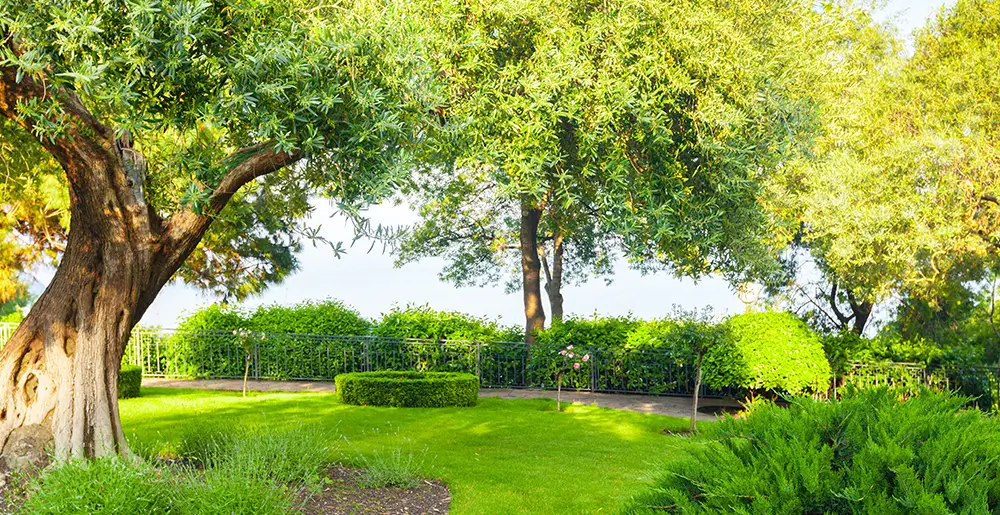
Innovations in Eco-Friendly Landscaping
Smart Irrigation Systems
IoT-enabled sensors and automated watering schedules allow for precise water management based on real-time weather and soil conditions. Smartphone apps provide homeowners with remote monitoring and control capabilities, optimizing water usage and promoting water conservation.
Sustainable Lawn Care Products
Bio-based fertilizers and natural weed control solutions offer effective alternatives to traditional chemical products. By harnessing the power of natural ingredients, these eco-friendly products provide safe and sustainable solutions for maintaining a healthy lawn.
Green Roof and Vertical Gardens
Utilizing rooftops and vertical spaces for greenery expands urban green space and provides numerous environmental benefits. Green roofs help reduce the heat island effect, improve air quality, and enhance biodiversity, making them an excellent option for eco-friendly landscaping in urban environments.
The Role of Technology in Sustainable Lawn Care
Advancements in lawn care robotics and autonomous mowers streamline maintenance tasks while reducing labour and resource requirements. Data-driven insights obtained through IoT devices and sensors enable homeowners to optimize lawn care practices, minimize resource usage, and promote sustainability.
Challenges and Opportunities in Adopting Eco-Friendly Landscaping Practices
Overcoming barriers such as initial costs and lack of awareness remains a challenge in the widespread adoption of eco-friendly landscaping practices. However, policy support and incentives can play a crucial role in promoting sustainable lawn care and encouraging homeowners to embrace eco-friendly landscaping for a greener future.
Incorporate Eco-Friendly Practices
The future of lawn care lies in embracing sustainable practices and leveraging innovative technologies to create eco-friendly landscapes. By prioritizing water conservation, biodiversity promotion, soil health enhancement, and energy efficiency, homeowners can contribute to environmental conservation while enjoying lush and vibrant outdoor spaces. Together, let’s pave the way for a more sustainable future through eco-friendly landscaping.
Having a healthy lawn and utilizing eco-friendly practices can substantially impact the environment. Be sure to look into the environmental benefits of our turf and contact us for any questions or to request a quote.
Curb Appeal Landscaping Secrets: Transforming Your Property’s Value with a Stunning Lawn
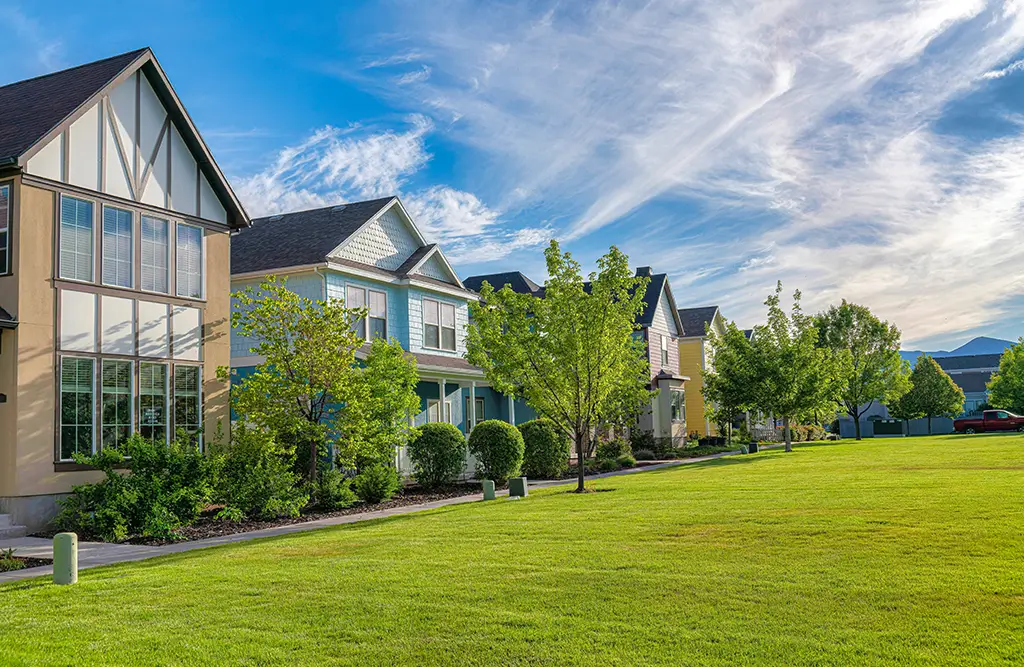
In real estate, first impressions are paramount. Potential buyers often form their initial judgments based on a property’s curb appeal, which encompasses everything from the exterior facade to the landscaping. A well-maintained lawn can greatly improve curb appeal and, consequently, increase the overall value of a property. In this blog, we will explore the curb appeal landscaping secrets that can transform your property’s value.
The Impact of Curb Appeal on Property Value
Before diving into landscaping secrets, let’s understand why curb appeal matters in real estate. Studies consistently show that attractive home exteriors tend to have higher prices and attract more potential buyers. Curb appeal sets the tone for a property, creating a positive first impression that will help influence a buyer’s perception of the entire home.
Understanding Landscaping as a Key Element
Landscaping is more than just planting flowers or mowing the lawn; it’s about creating a cohesive and inviting outdoor space. A stunning lawn is often the centrepiece of landscaping, serving as the foundation for other design elements. A lush, well-manicured lawn enhances aesthetics and contributes to a healthier environment and better property functionality.
Essential Landscaping Secrets for Curb Appeal
Creating a stunning lawn and landscape involves a combination of art and science. Here are some key curb appeal landscaping ideas to boost your home’s curb appeal:
Lawn Care Tips
Proper lawn care is fundamental to a stunning landscape. This includes regular mowing at the appropriate height to promote healthy growth and discourage growth. Aim to mow no more than a third of the grass blade at a time to prevent undue stress on the turf. Additionally, adjust the mower blade height seasonally to accommodate growth variations.
Adequate watering is crucial for maintaining a lush, green lawn. Watering deep but infrequently encourages the development of deep-root growth and drought tolerance. Consider using an irrigation system or a soaker hose to ensure even water distribution and minimize runoff.
Strategic fertilization is another essential aspect of lawn care. Choose a fertilizer formula tailored to your lawn’s needs, considering factors like soil composition, grass type, and seasonal nutrient requirements. Apply fertilizers evenly and follow the recommended application rates to prevent over-fertilization, which can lead to environmental problems.
Lastly, periodic aeration is beneficial for soil health and lawn vitality. Core aeration alleviates soil compaction, improves water infiltration, and promotes root development. For optimal results, schedule aeration during the growing season, typically in spring or fall.
Strategic Planting
Choosing the right plants, trees, and shrubs can significantly enhance your landscape’s visual appeal. Consider the overall design theme, colour palette, and maintenance requirements when selecting plant species. Incorporate a combination of evergreen and seasonal plants to ensure year-round interest and texture variation.
Group plants based on their similar water and sunlight needs together to simplify maintenance and optimize growth. Pay attention to plant spacing to allow adequate room for growth without overcrowding. Incorporate focal points, such as specimen trees or flowering shrubs, to draw attention and create visual interest.
Hardscaping Elements
Hardscaping elements like pathways, driveways, borders, and outdoor lighting add structure and functionality to your landscape. Choose materials that complement your home’s architecture and landscaping style. Consider factors like durability, maintenance requirements, and aesthetic appeal when selecting hardscape materials.
Install pathways and driveways that provide safe and convenient access while enhancing the overall aesthetic of your property. Use borders and edging to define garden beds, create visual boundaries, and prevent soil erosion. Incorporate outdoor lighting to illuminate pathways, highlight landscape features, and enhance nighttime ambiance.
Maintenance Practices
Consistent maintenance is essential for preserving curb appeal and ensuring long-term landscape health. Create a regular maintenance schedule that encompasses tasks such as mowing, watering, fertilizing, pruning, and weeding. Stay proactive in addressing pest and disease issues to prevent damage and maintain plant health.
Monitor soil moisture levels regularly and adjust watering frequency according to plant needs and weather conditions. Mulch garden beds to conserve moisture, suppress weeds, and improve soil health. Remove debris, fallen leaves, and dead plant material to keep your landscape tidy and attractive.

Benefits Beyond Aesthetics
While a stunning lawn undoubtedly improves your property’s visual appeal, its benefits extend beyond aesthetics. A well-maintained lawn contributes to better property drainage, reduces soil erosion, enhances energy efficiency by providing natural cooling, and promotes biodiversity by supporting local flora and fauna.
Tips for DIY Landscaping vs. Professional Services
Deciding between DIY landscaping and hiring professionals depends on factors like budget, time availability, and expertise. DIY projects can be fulfilling and cost-effective for smaller tasks, but complex landscaping projects may require the expertise and resources of professional landscapers. Consider your skill level, available time, and project scope before embarking on a DIY landscaping endeavour.
Future Trends in Curb Appeal Landscaping
As the landscaping industry evolves, new trends emerge that can further enhance curb appeal. Sustainability practices, such as xeriscaping and native plant gardening, are gaining popularity for their environmental benefits and water conservation. Smart landscaping technologies, like automated irrigation systems and eco-friendly lighting, offer efficient ways to maintain a stunning landscape.
Transform Your Property Value
Landscaping secrets play a crucial role in transforming your property’s value by enhancing curb appeal. From proper lawn care and strategic planting to hardscaping elements and maintenance practices, each aspect contributes to creating a stunning landscape that attracts buyers and increases property value. By implementing these landscaping secrets and staying attuned to future trends, you can elevate and add curb appeal to your property. This will leave a lasting impression in the competitive real estate market.
At Lavington Turf Farms, we offer homeowners premium quality turfgrass varieties known for their durability and lushness. By enhancing your curb appeal landscaping with our turfgrass varieties, you can create a visually appealing and environmentally friendly outdoor space that adds value to your property.